Tag: ARDS
Practical Issues Updates in Anesthesia and Intensive Care
This book describes the state of the art concerning some of the most hotly debated topics in anesthesia and intensive care and is at the same time intended to serve as a useful practical guide that will assist in improving... read more
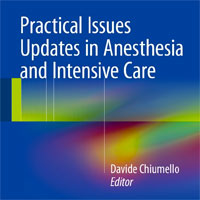
External Chest-wall Compression in Prolonged COVID-19 ARDS with Low-compliance
SARS-CoV-2 can lead to severe respiratory failure (C-ARDS) with some clinical and radiological characteristics that match the presentation of acute respiratory distress syndrome (ARDS). The management of mechanical ventilation... read more
Prone Position Minimizes the Exacerbation of Effort-dependent Lung Injury
Prone position, independent of positive end-expiratory pressure levels, diminishes a maldistribution of lung stress and inflation imposed by spontaneous effort and mitigates spontaneous effort, resulting in less effort-dependent... read more
ARDS Readmissions: A nationwide Cross-sectional Analysis of Epidemiology
Thirty-day readmission occurred in 18.4% of patients with acute respiratory distress syndrome (ARDS) in this sample, and early readmission is strongly associated with increased mortality compared to late readmission. Further... read more
Sotrovimab Effect Among High-risk COVID-19 Patients
Among nonhospitalized patients with mild to moderate COVID-19 and at risk of disease progression, a single intravenous dose of sotrovimab, compared with placebo, significantly reduced the risk of a composite end point of... read more
Epidemiology and Outcomes of Critically Ill Children at Risk for PARDS
The Pediatric Acute Lung Injury Consensus Conference “at-risk for pediatric acute respiratory distress syndrome” criteria identify critically ill children at high risk of pediatric acute respiratory distress syndrome... read more
Clinical, Biological and Molecular Aspects of COVID-19
The novel coronavirus 2019 (COVID-19) has caused a serious global pandemic in just eight months. Nearly every country and territory in the world has been affected by the virus. The virulence and infection rate of the... read more
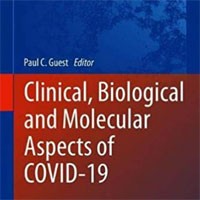
Clinical Profile and Recovery Pattern of Dysphagia in COVID-19 Patients
COVID-19 considerably impacted swallowing function in the current study. Although many patients recovered within an acceptable timeframe, some experienced persistent severe dysphagia and a protracted recovery with dependence... read more
ARDS Subphenotypes Validation and Utility Identified by Machine-learning Models
Classifier models using clinical variables alone can accurately assign ARDS subphenotypes in observational cohorts. Application of these models can provide valuable prognostic information and could inform management strategies... read more
High-Dose Dexamethasone vs. Tocilizumab in COVID-19 Pneumonia
Our study findings discourage the use of high doses of dexamethasone in the management of moderate to severe COVID-19 ARDS. The routine use of such high doses to mitigate the inflammatory cytokine storm in these patients... read more
Noninvasive Respiratory Support for COVID-19 Patients: When, for Whom, and How?
The significant mortality rate and prolonged ventilator days associated with invasive mechanical ventilation (IMV) in patients with severe COVID-19 have incited a debate surrounding the use of noninvasive respiratory support... read more
Image-Guided Management of COVID-19 Lung Disease
This book offers a detailed and up-to-date overview of image-guided diagnostics in COVID-19 lung disease. A range of image-guided CT and ultrasound procedures in different chest regions are described. For each procedure,... read more
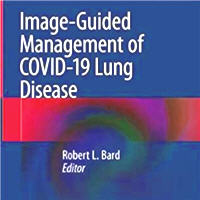
Pediatric Acute Respiratory Distress Syndrome
This book provides a concise yet comprehensive overview of pediatric acute respiratory distress syndrome (PARDS). The text reviews the emerging science behind the new PARDS definition; explores epidemiology, pathobiology,... read more
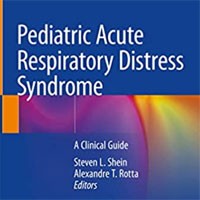
Prone Positioning Effect on Adult Patients Survival Receiving vvECMO for ARDS
This systematic review and meta-analysis of 13 studies (total N = 1836) showed that PP of acute respiratory distress syndrome (ARDS) patients receiving venovenous ECMO (vvECMO) was associated with a significant improvement... read more
Bringing Biological ARDS Phenotypes to the Bedside with Machine-learning-based Classifiers
The identification of distinct phenotypes within heterogeneous disease states is a key component of personalised medicine, enabling enrichment of clinical trials, better prognostication, and delivery of tailored treatments... read more
Anticoagulation in COVID-19
Thrombotic complications (arterial and venous) are common in patients admitted to hospital with COVID-19 and are an independent predictor of poor outcome. Microvascular thrombi also contribute to organ dysfunction, including... read more
Energy Transmission in Mechanically Ventilated Children
Mechanical energy (ME) better related to underlying lung pathology and patient outcome than MP. The delivery of generated energy to the lung was not dependent on endotracheal tube diameter (ETT) size during PC ventilation.... read more
Quantifying the Burden of Viral Sepsis During the COVID-19 Pandemic and Beyond
Coronavirus disease 2019 (COVID-19), the disease caused by severe acute respiratory syndrome coronavirus 2 (SARS-CoV-2), has resulted in millions of deaths worldwide and countless more admissions to hospitals and ICUs. Since... read more
Principles of Pulmonary Medicine
With an emphasis on the pathophysiologic basis of pulmonary disease, Principles of Pulmonary Medicine, 7th Edition, by Drs. Steven E Weinberger, Barbara A Cockrill, and Jess Mandel, provides a superbly illustrated introduction... read more
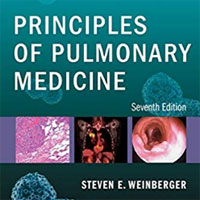
Ventilation in Patients with Intra-abdominal Hypertension
The incidence of intra-abdominal hypertension (IAH) is high and still underappreciated by critical care physicians throughout the world. One in four to one in three patients will have IAH on admission, while one out of... read more
HSV-1 Reactivation Associated with Increased Mortality Risk and Pneumonia in COVID-19 Patients
Critically ill COVID-19 patients frequently reactivate HSV-1 but not HSV-2. HSV-1 reactivation in critically ill COVID-19 patients was associated with an increased risk of day-60 mortality and hospital-acquired pneumonia... read more
ARDS and High Blood Endocan Profile During COVID‑19
With great interest, we read the recently published paper by Pascreau et al. concluding that a high blood endocan profile during COVID‑19 distinguishes moderate from severe acute respiratory distress syndrome (ARDS). In... read more









